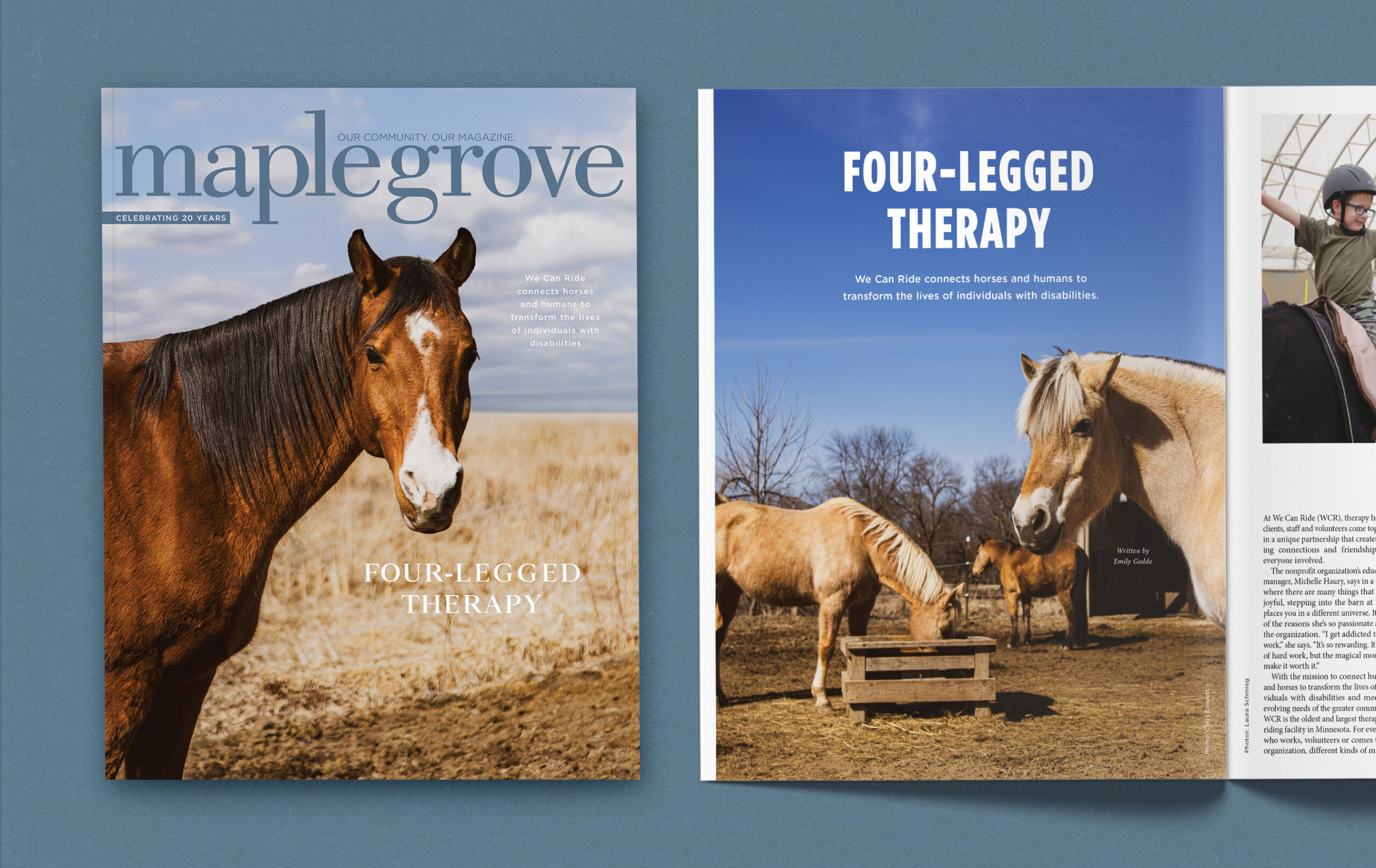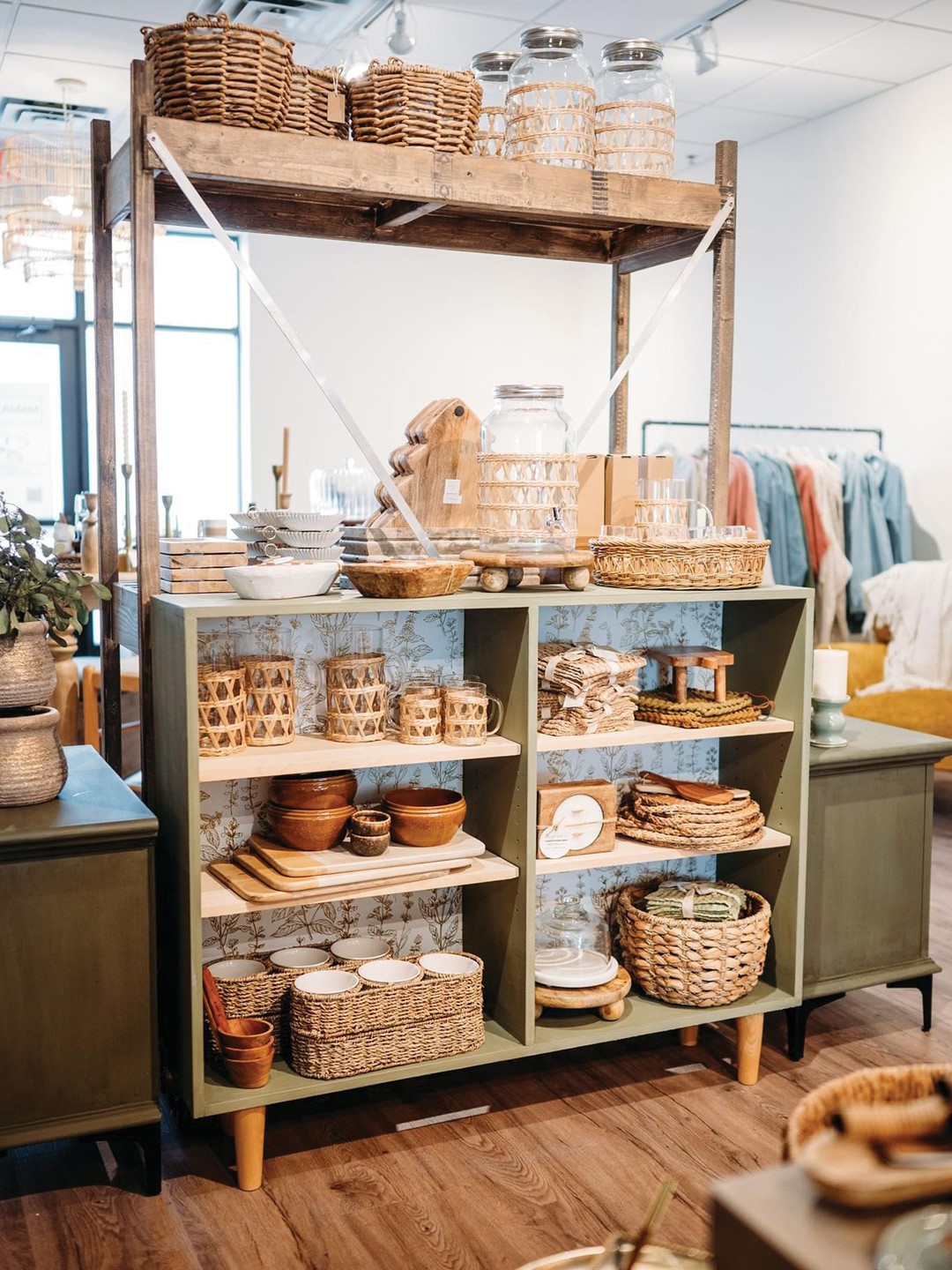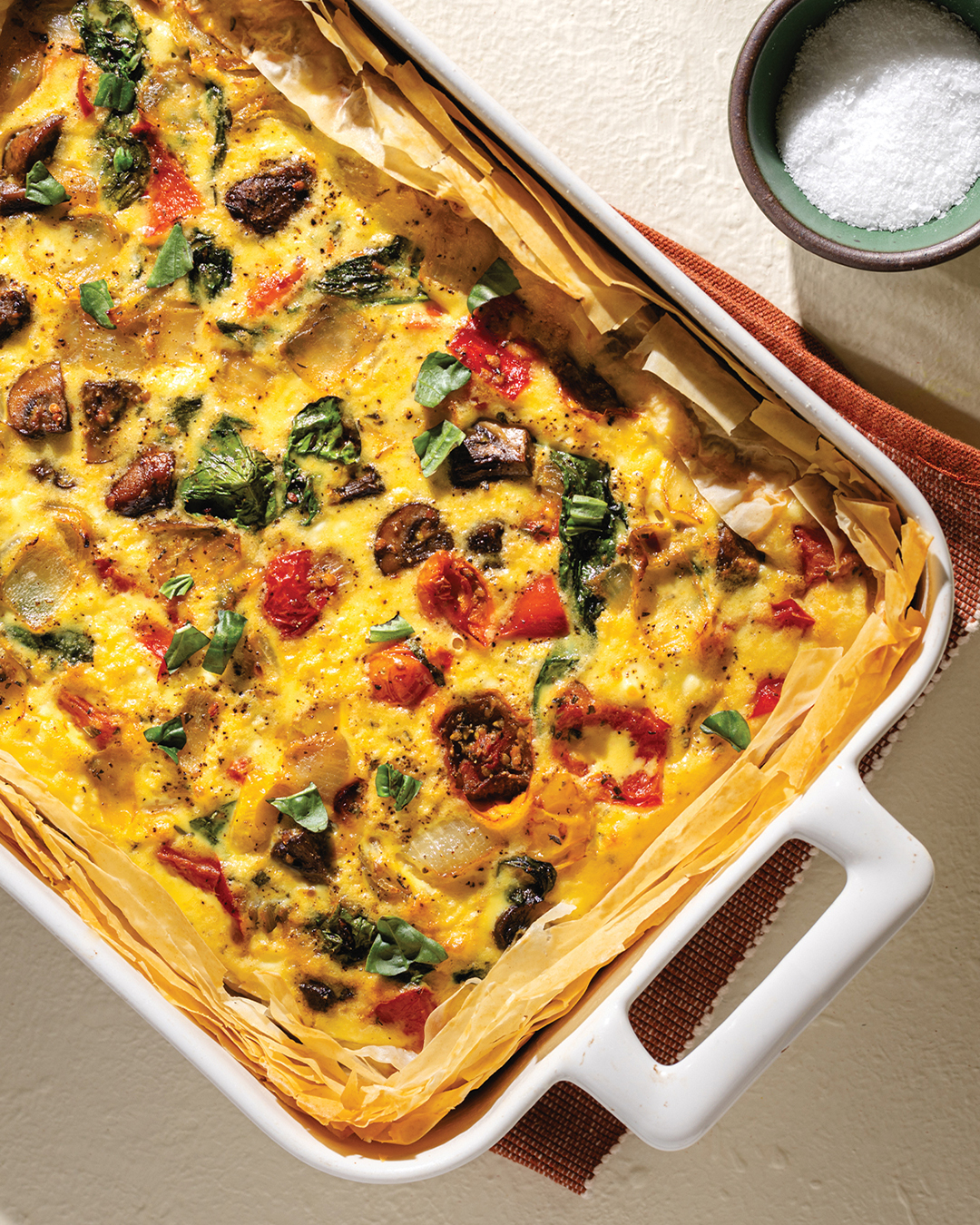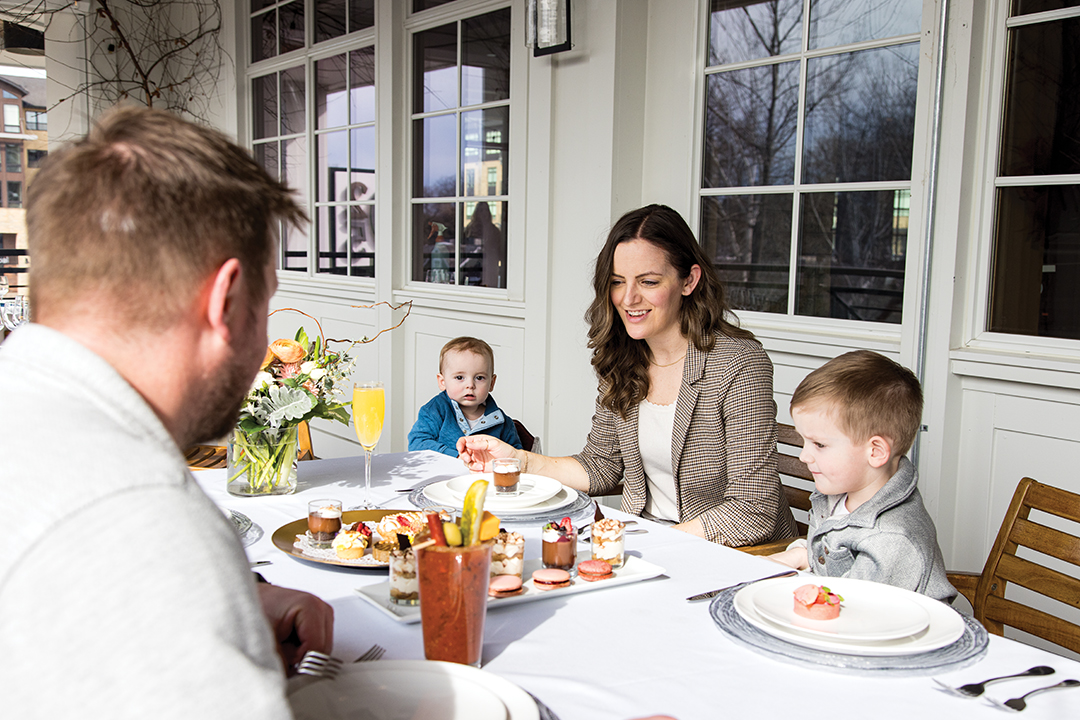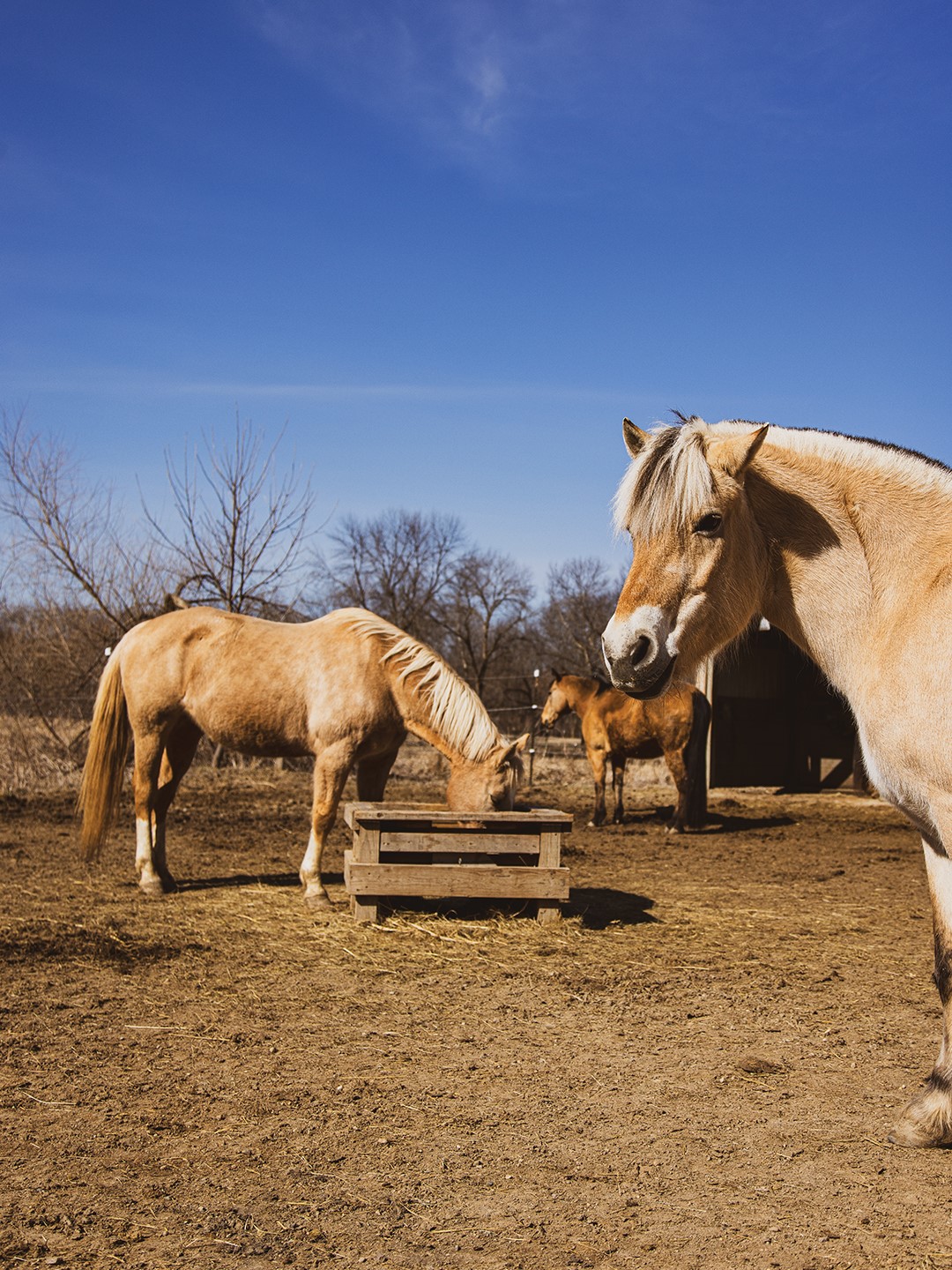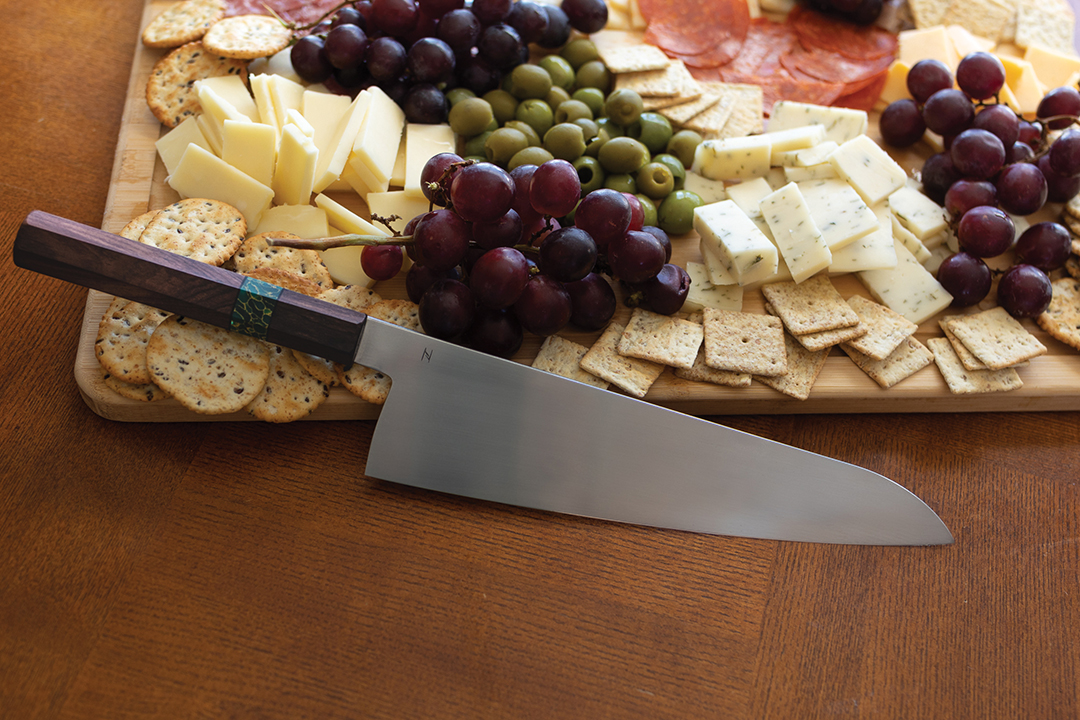
Stefan Hall notes that the Gyuto is a chef’s number one knife—it can do it all. Photo: Gregg Media Outdoors
Stefan Hall handcrafts premium kitchen knives.
A handcrafted, forged steel knife is heated to a high temperature and then skillfully pounded into shape. The stock removal method of knife making requires the knifemaker to remove and grind away premium material until what remains is a handmade knife. Maple Grove’s Stefan Hall has been professionally making knives since 2018. His specialty is Japanese-style kitchen knives.
“I always collected knives,” Hall says. “One day, I started watching master knifemakers make their knives on YouTube. I wanted to do that.”
Life gave Hall his chance. “I was laid off from a sales job when my wife was pregnant,” he says. “When she suggested I be a stay-at-home dad and do more with my knife-making hobby, I signed right up.”
Hall’s goal is to make the knife everyone uses. “It’s the kitchen knife, but there’s a problem,” Hall says. “The knife world and the kitchen world don’t talk to each other.”
His staple, like it is in Japan, is the Gyuto knife. “It can do it all,” Hall says. “If you’re a minimalist, it’s the one knife that can replace an entire set.” The slightly curved blade excels at chopping, while the fine tip is precise.
Personal Preference
Hall makes both stainless steel and carbon steel knives. While his edges, or grinds, can be different, his two most popular are what he describes as “workhorse” and “laser.”
Workhorse is capable of slicing through thick vegetables and small bones, while the laser edge is thinner and used in foods you would sink your teeth into (soft vegetables and boneless meats). Its thinness comes at a cost, as the blade is susceptible to chipping.
While stainless steel and carbon knives can perform the same tasks, Hall prefers the latter. “I think carbon steel is easier for a home chef to sharpen,” he says. “While I say that, the geometry of the cutting edges is similar.”
Complicated Knives
Talking about the knives he’s created, Hall talks about a blade that transitions from hollow to convex.
“When you push a cut, the food opens,” Hall says. “When food opens, it doesn’t stick to the side of the knife. I’d explain how it works, but I’d go down a rabbit hole.”
Hall does the same while attempting to explain the forging process. “Steel is like Play-Doh when you pull it out of the forging machine with tongs,” he says. “It’s high orange to white in color, and it’s so hot, you’re flirting with melting.”
It’s where transformation begins and ends. “If it doesn’t cut, it doesn’t matter,” Hall says.
He finishes most of his knives with traditional Wa handles. He says, “The handle material is where you can have a lot of fun, but I’m like most knife makers, way too much material and not enough knives.”
Hall’s specialities:
Bunka: The Bunka knife is considered a general-purpose knife. The flat blade works well on vegetables; its triangle-shaped tip excels in cutting fish and meats. The typical Bunka is 7 inches long.
Gyuto: The Gyuto is the go-to of go-to knives. It’s the knife a chef reaches for first. With its 7- to 12-inch blade, it’s versatile in both what it can cut and how it can cut.
Nikiri: The Nikiri knife, featuring a rectangular flat-edged blade, is designed for the push/pull chopping of vegetables. Because the edge is flat, it contacts the cutting board at once.
Petty or pairing: A petty or pairing knife is a small knife for a small job. It’s perfect for slicing garlic, cutting the core from an apple or peeling a potato.
Santoku: Translated, Santoku means “three virtues.” Some say these virtues are slicing, dicing and mincing. Others say they’re fish, meat and vegetables. The Santoku is a multipurpose knife and easily one of the most popular knife styles in Japan.
Facebook: HallMade Knives
Instagram: @hallmade_knives





